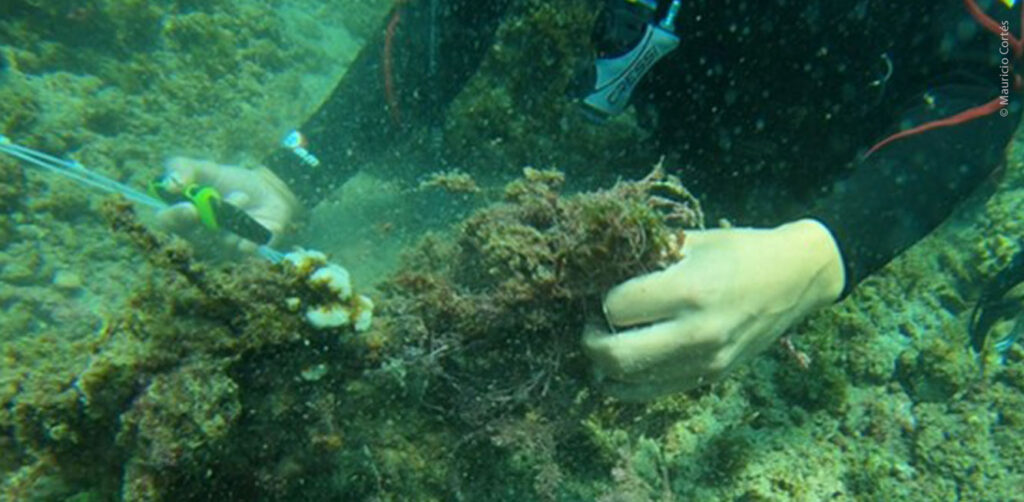To the Northeast of the Islas Marías, 46.2 kilometers off the coast of Santiago Ixcuintla, Nayarit, is located Isla Isabel, a natural site in the Mexican Pacific that stands out for its beauty and biodiversity. This island with an extension of 98 hectares of land area, of volcanic origin approximately 3.5 million years ago, is surrounded by more than 11 hectares of coral and rocky reefs, that function as nurseries for the ecosystem, being an important generator of oxygen and the habitat of a great quantity of marine flora and fauna.
Because of its ecological and environmental value, Isabel Island was declared a National Park in December 1980. In addition, it is recognized by UNESCO as a priority site for our planet, included since 2003 in the RAMSAR sites list that emphasizes marine sites and wetlands conservation. However, it is a vulnerable ecosystem due to its high sensitivity to temperature changes and overexploitation of resources. In recent times, this became especially notorious, since the alterations caused by global warming caused the loss of 80% of the coral reefs in this area in the last three years alone.
It is therefore essential to care for and conserve Isla Isabel National Park. At Pronatura Noroeste we maintain intense activity to conserve the ecosystem and wildlife, with emphasis on the 300-meter “perimeter ring” around the island, where the most young and juvenile specimens of fish, crustaceans and mollusks are concentrated. Likewise, starting in 2017 we undertook an integral effort with the National Commission of Natural Protected Areas (CONANP) to repopulate the coral reef, by placing more than 30 “half orange”-shaped metal structures, 80 cm high x 120 cm in diameter, which are located at the foot of the reef. A piece of coral was attached to them to grow the “heads” that gradually create a reef. Today, these structures are covered with coral heads that grew as an extension of the reef.
To commemorate World Ocean Day, on June 8th we participated with CONANP and the national park management on an intense day of cleanup of Isla Isabel and its reefs. This was in coordination with the fishing cooperatives, the Autonomous University of Nayarit through the Biology Unit and the National School of Fishing Engineering, the Wild Coast organization, local tourism companies such as Sartiaguin Tours and Expeditions, Experiencias Ecoturísticas Mata (ECOMATA) and Pipilas Tours, and others based in Guadalajara, such as Oceanos Expediciones y Buceo and Caballeros del Mar.
During the land and marine cleanup day, a significant amount of plastic and garbage that comes with the wind and tides was removed from the island and the reef, as well as loose pieces of nets and hook lines. Talks on responsible tourism were also given to scuba divers and fishermen, to promote sustainable fishing and good practices in the national park. This comes in addition to the actions carried out in previous years to benefit the park, such as the placement of buoys (for mooring and signaling) and “Cuban houses” that offer shelter to lobsters and other animals.
Among the numerous species that inhabit this Mexican Pacific site are invertebrates (echinoderms, gorgonians and mollusks) as well as more than 300 species of fish, essential for the food chain. We can mention the Barber Butterfly Fish (Johnrandallia nigrirostris), which cleans other fish of parasites; the King Angel (Holacanthus passer) and the Court Angel (Pomacanthus zonipectus), the latter considered a protected species under Mexican Official Norm 059 published by the Ministry of the Environment and Natural Resources (SEMARNAT). Some of the seabirds are the Blue-footed Booby (Sula nebouxii), the Frigatebird (Fregata magnificens), the Red-billed Tropicbird (Phaethon aethereus) and the Brown Tern (Anous stolidus), as well as marine reptiles such as the Hawksbill Turtle (Eretmochelys imbricata).

It should be noted that Pronatura Noroeste’s work in Isla Isabel National Park depends largely on funding from its benefactors, since conservation tasks require diving equipment in optimal conditions, brigades of personnel and fuel for land and water vehicles.
We invite you to collaborate with us in Isla Isabel National Park.












